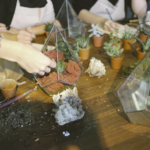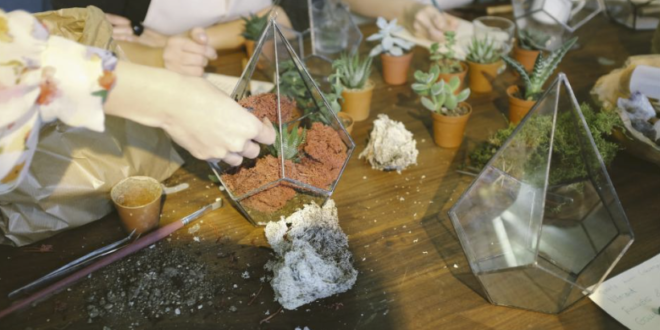How to Maximise Space and Master the Art of Urban Gardens
Urban farming has emerged as one of the biggest eco-trends of the decade, and the fantastic news is that you don’t have to own a rural plot in order to enjoy a DIY garden. On the contrary, no matter how small your home, there’s no reason why you can’t nurture your very own slice of urban paradise.
Not only is an urban garden incredibly rewarding, but it’s a fantastic way to lower your environmental footprint, and enjoy organic produce at your fingertips. If you’re dying to give your green thumb a workout, read on for our top tips on how to maximise the space you have, and create your own urban allotment.
 Going vertical
Going vertical
A truly ingenious design solution, vertical gardens turn the spatial constraints of city living into an exciting opportunity to grow deliciously fresh urban produce. No matter how small your living area, vertical gardens empower everyone with the space to become an urban farmer in their own right. You’re spoilt for choice when it comes to going vertical, with almost every living space brimming with opportunities. From sunny courtyards and backyard fences to interior walls and outdoor pergolas, start thinking vertically and you’ll unlock sky-high opportunities.
Head over heels for herbs
Live in a top floor apartment with no balcony to speak of, let alone a garden? That’s no excuse not to welcome a little flora into your life. Herbs like parsley, oregano, thyme, rosemary and lemongrass flourish indoors, and a planter box on your windowsill can hook you up with wonderfully fragrant ingredients throughout the year. If you have the luxury of outdoor space, experiment with tiered herb stands, hanging herb baskets and other decorative displays. All you’ll need to harvest your homegrown herbs is a good pair of scissors!
Raise it up
If you really want to make the most of a small urban garden, try adding pergolas, arbours and trellises above your beds. You can then train your plants to grow up as well as out, which maximises your harvest and frees up extra space. Not to mention the fact that they look lovely, and will give your garden an enchanting overgrown aesthetic.
Cage your plants
Some plants can get a little bit on the wild side, which is where cages are extremely useful. Use them to control growth, and keep your urban garden looking neat and tidy. You’ll then have plenty of space to experiment with other varieties, and ensure plants aren’t competing for sunlight, nutrients and your own TLC.
Understand companion planting
Small gardens call for extra creativity, which means getting a little innovative with your approach. Companion planting is amazingly effective, and sees certain vegetables or herbs strategically placed next to each other. For example, planting corn, beans and squashes in a single mound sees all three grow symbiotically, with benefits including pest control, enriched soil nutrients, weed control and protection from the elements. You’ll enjoy heartier crops, and your plants will thrive in the process.
 Learn to love planters
Learn to love planters
Installing garden beds can be a mission, which is why we love planter boxes to no end. Simply place them anywhere you like, fill them with soil and use them to grow any urban crop your palate desires. Plus, they double as decorative features, which means you can grow your own produce and spruce up your garden in the process.
Space saving thoroughfares
If you have the luxury of a little more space it’s always a good idea to incorporate walkways in-between your crops. While traditional vegetable gardens feature a pathway in-between each row, you can save space by opting for a walkway every three to four rows. This way you can easily harvest your fruit, vegetables and herbs without trampling on seedlings.
Still not convinced that even the smallest space can be transformed into a thriving produce garden? Look no further than Pinterest, where you’ll find an urban jungle of inspiration that’ll make you want to drop everything and head to your local Bunnings store faster than you can say ‘fertiliser!’










Join the Discussion
Type out your comment here:
You must be logged in to post a comment.